Discoveries in Egypt
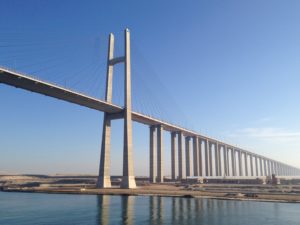
For more Near East Discoveries, our ship joined a convoy of 24 ships to enter the Suez Canal, the famous passageway between Asia and Africa. The canal has been open since 1869, except for the Suez Crisis in 1956-7. Egyptian program director Amin assured us of intense security on both banks and in the air above and I felt serene. Before breakfast we passed under this lovely Peace Bridge at El-Qantara, also known as the Egyptian-Japanese Friendship Bridge, thanks to Japanese capital. There is a new side channel to the canal that allows more ships and reduces their transit time. The canal is 66 feet deep and 210 miles long.
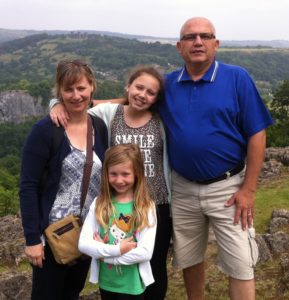 Amin said he would try to make us feel like Egyptians, but with only four days together to absorb 7,000 years of history, he admitted that he could serve only appetizers, not full entrees. He started with his own story: born 1963 in Giza, he completed University and compulsory military service, and started guiding tours on the Nile. He is married to Tracy, a Catholic from Litchfield UK, and has two daughters, Leila, 16, and Hannah, 11, who are being raised as Muslims. Since the Arab Spring in 2011, tourism has declined 95%, but Amin is such a stellar guide that Grand Circle has put him to work leading tours in UK and Europe. He hopes to attract more tourists to Egypt.
Amin said he would try to make us feel like Egyptians, but with only four days together to absorb 7,000 years of history, he admitted that he could serve only appetizers, not full entrees. He started with his own story: born 1963 in Giza, he completed University and compulsory military service, and started guiding tours on the Nile. He is married to Tracy, a Catholic from Litchfield UK, and has two daughters, Leila, 16, and Hannah, 11, who are being raised as Muslims. Since the Arab Spring in 2011, tourism has declined 95%, but Amin is such a stellar guide that Grand Circle has put him to work leading tours in UK and Europe. He hopes to attract more tourists to Egypt.
We spent most of Day 7 on board the ship, as the crossing took about 10 hours. The crew treated us to a visit to the bridge, a cooking demonstration, and really great food.
The four program directors narrated slide shows that acquainted us with life in Egypt:
- Cinema. Egypt, the Hollywood of the East, has produced 4000 movies in 100 years. Omar Sharif is the most famous actor, but singer Om Kolthoum sold millions of records.
- Cuisine. Mona introduced us to Foul Medammes (fava beans) for breakfast, falafel and baladi bread for lunch, and for dinner: Hamam Mahshy (stuffed pigeons), Bamya (okra cooked with chiles and lemon–yum!), and Om Aly, a 13th century Mameluke dessert (puff pastry, milk, nuts, coconut, and raisins–another yum!).
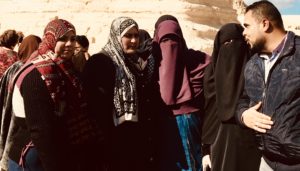 Dress. There is a great variety of clothing: women on the Libyan border oases wear colorful, fancy clothes; Nubian women wear black; women in the Delta wear black with conspicuous gold jewelry, while men wear white galibiyas. Many Cairo women wear head scarves, but with jeans and tees; only Wahabi Muslim women cover their faces.
Dress. There is a great variety of clothing: women on the Libyan border oases wear colorful, fancy clothes; Nubian women wear black; women in the Delta wear black with conspicuous gold jewelry, while men wear white galibiyas. Many Cairo women wear head scarves, but with jeans and tees; only Wahabi Muslim women cover their faces.- Population growth is a huge challenge: from 4 million in 1869 to 98.6 million today. The average number of children per family is down from 10 to 5. The current median age is 24.8. One-third of the work force is female. Only 7% of Egypt’s land is inhabited, the rest is desert so dry it makes Texas’ Permian Basin look verdant.
With the Clio anchored at Ain Sokhna, we proceeded to Giza in four buses, with armed security officers in each. We were accompanied by a police escort. Ceramica Cleopatra, a porcelain ceramics firm, was the largest factory I saw along the way. A new administrative capital is under construction thirty miles from Tahrir Square, the center of the ancient city. Amin told us that when completed, the new city will be the size of Singapore. Many dwellings had rebar sticking upward from unfinished roof columns. Amin explained that formerly, taxes were not levied until buildings were finished and that currently, leaving “random extensibles” allows families the space to accommodate additional generations. One could call it hopefulness.
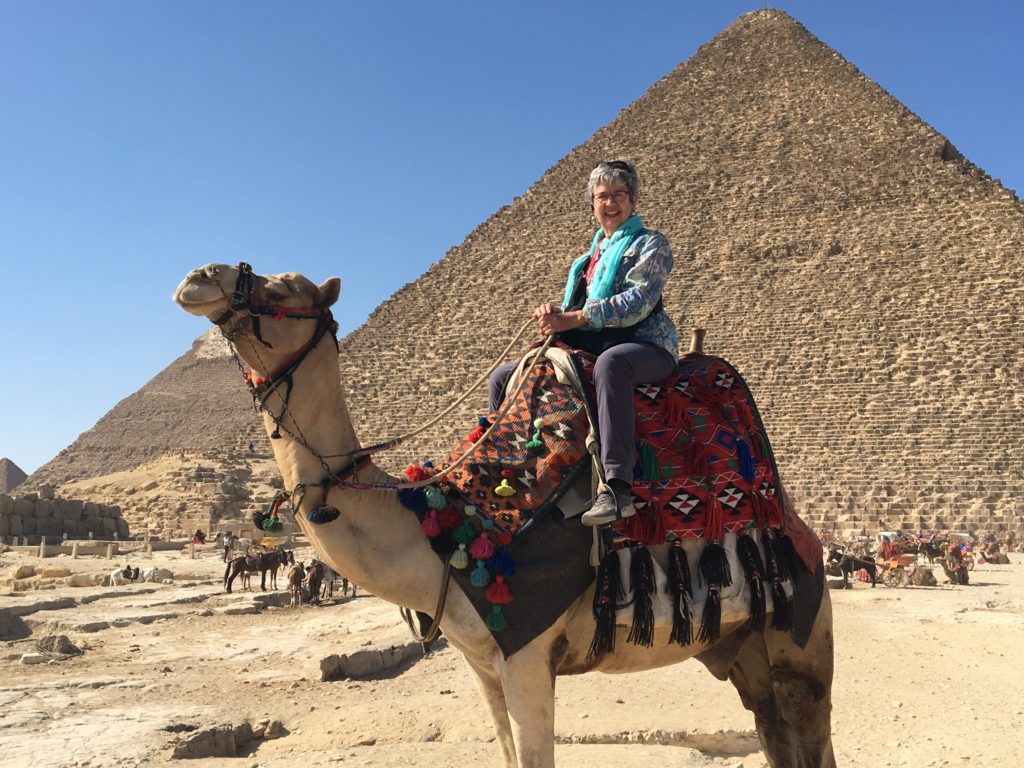 And finally, the Great Pyramid! It is the last survivor among the Seven Wonders of the Ancient World. The Great Pyramid is flanked by two others, Khafre and Menkaure, which also date back to 2589 BCE. Though I didn’t go inside the pyramid, I couldn’t pass up the chance to ride a camel! Marjo rode one, too. It was comfortable, it was fun, and I loved it! From my perch, I could see the Mena House, where Winston Churchill and Agatha Christie once dined, and where we would soon have lunch. Its golf course made me think of Steve for the umpteenth time.
And finally, the Great Pyramid! It is the last survivor among the Seven Wonders of the Ancient World. The Great Pyramid is flanked by two others, Khafre and Menkaure, which also date back to 2589 BCE. Though I didn’t go inside the pyramid, I couldn’t pass up the chance to ride a camel! Marjo rode one, too. It was comfortable, it was fun, and I loved it! From my perch, I could see the Mena House, where Winston Churchill and Agatha Christie once dined, and where we would soon have lunch. Its golf course made me think of Steve for the umpteenth time.
The magnificent, perplexing Great Sphinx of Giza with the body of a lion and the head of a man, has stood guard over the pyramids for roughly 5,000 years. This statue, which faces directly from West to East, was carved almost entirely from one piece of limestone.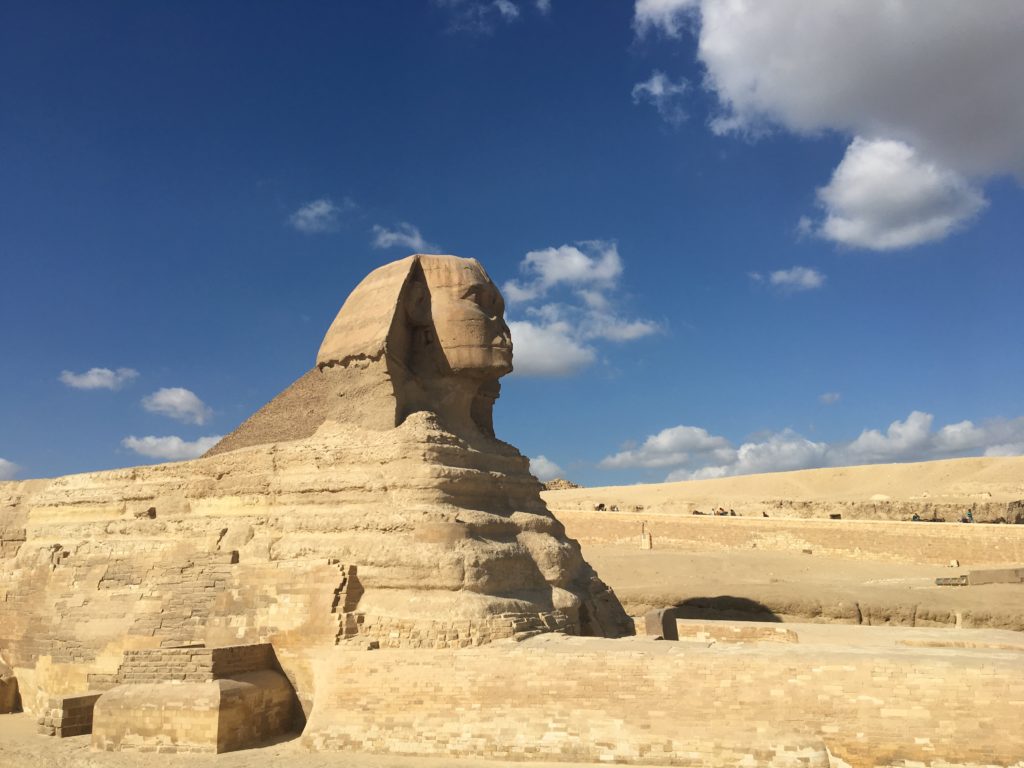
On the evening of that fine day our ship cruised to Hurghada, a very busy port where the Gulf of Suez joins the Red Sea. Many buildings were marked DP, which I discovered stood for Dubai Port or DP World, a company formed since Lilli and I visited Dubai in 2001. DP has 61 ports in 32 countries. Trans-shipments at Hurghada serve all of Africa. Note the large mosque El Mina Masjid in the background. The Coptic Cathedral of Saint Shenouda is also in Hurghada, which reminded me of my friend Beatrice Shenouda Friedrich, who was born in Egypt and whom we have visited in Dubai and Berlin.
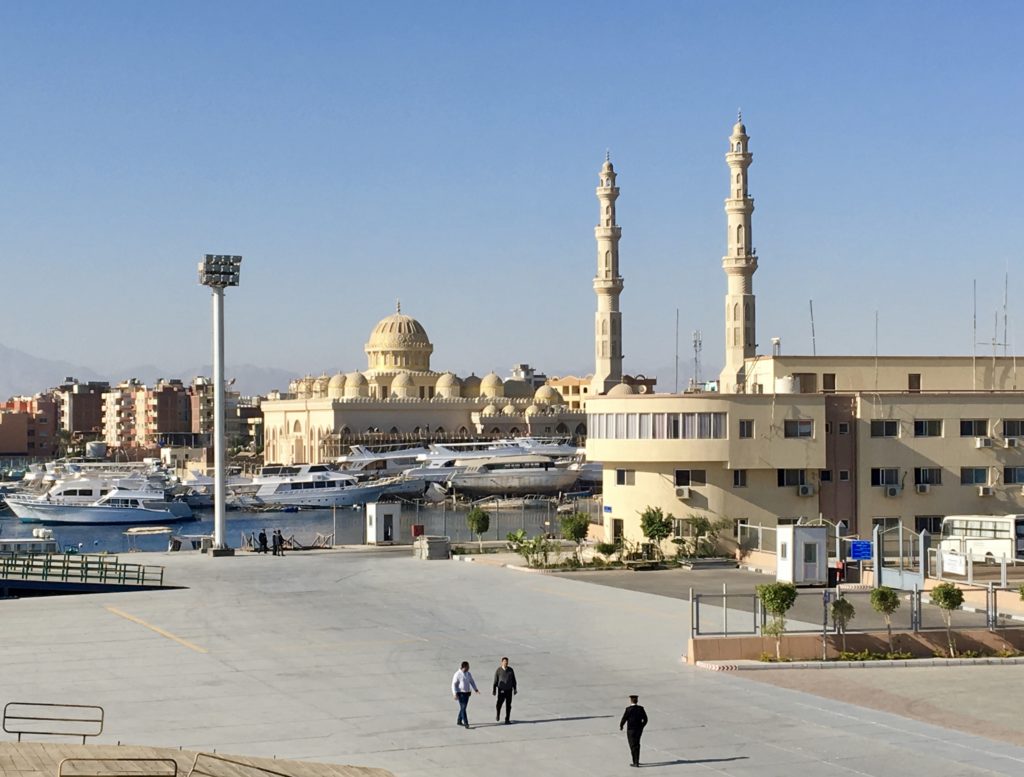
On the morning of Day 9, we transferred to a charter flight on Petroleum Air Services to Luxor, where we checked into the Winter Palace Hotel on the east bank of the Nile River. We went directly to Karnak Temple. Words fail–just look at all these pictures. Seeing the dimensions of this temple was a moment of humbling exaltation. For millennia human beings have believed in something greater than themselves. Egyptians built their beliefs at Karnak. I am grateful.
 From exaltation to indulgence: for about 40 years I’ve proudly worn a cartouche, with my name in hieroglyphics, that cousins Jay and Maxann brought me from Egypt. At a jewelry store near the Winter Palace Hotel, I bought customized cartouches for my two daughters, my daughter-in-law, and my three granddaughters. I want them to know we’re all the same tribe. I hope they will be inspired to visit Egypt someday, too.
From exaltation to indulgence: for about 40 years I’ve proudly worn a cartouche, with my name in hieroglyphics, that cousins Jay and Maxann brought me from Egypt. At a jewelry store near the Winter Palace Hotel, I bought customized cartouches for my two daughters, my daughter-in-law, and my three granddaughters. I want them to know we’re all the same tribe. I hope they will be inspired to visit Egypt someday, too.
The only thing I had been missing on this trip was live music by native performers. At last, at the Winter Palace, I got to hear and very briefly record, an Egyptian flutist. It was the perfect accompaniment to cartouches and sunset over the Nile.
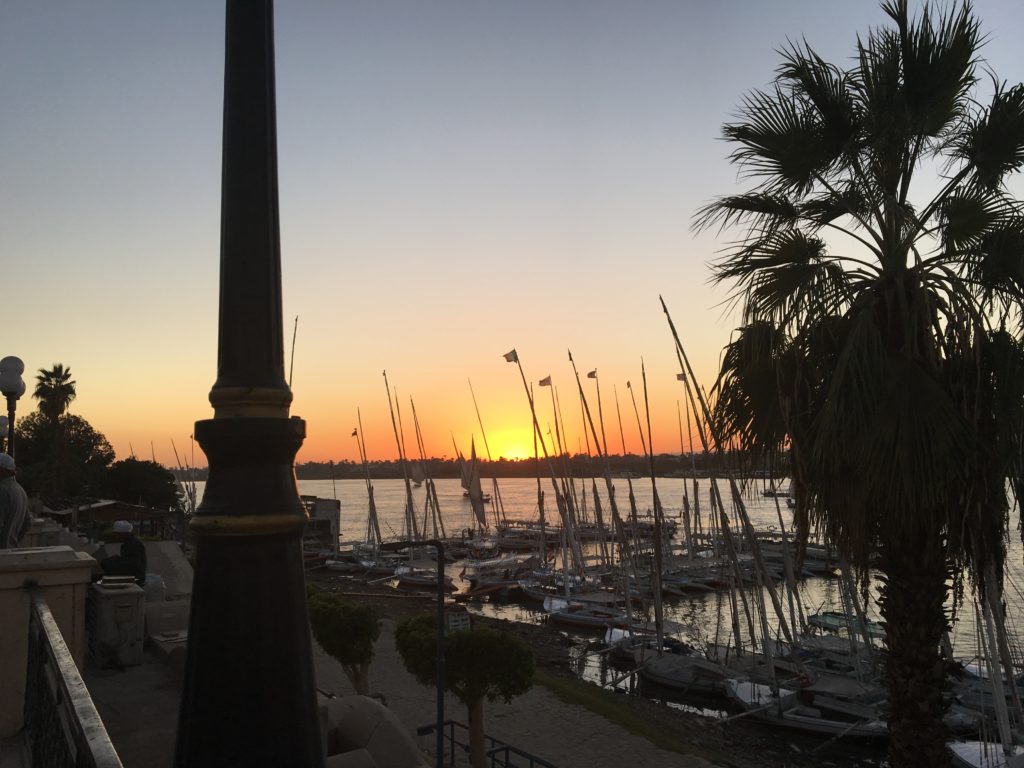
The next morning we crossed the Nile River by bus to see the Valley of the Kings on the west bank, a haven for archaeologists. I had seen the King Tutankhamun exhibit at the National Gallery many years ago; now I got to see King Tut’s tomb and several others, too. Here’s our group in Thebes:
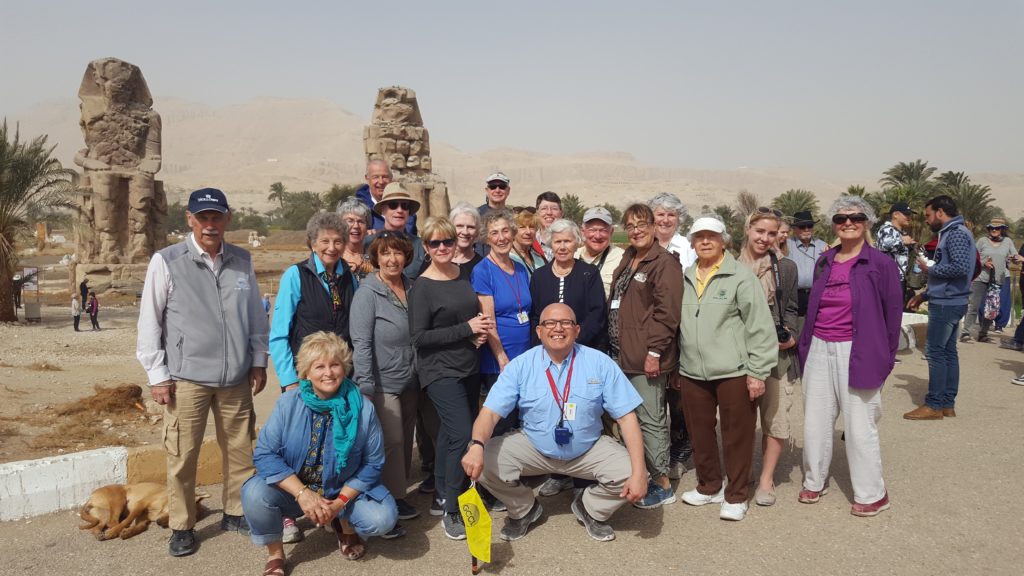
We were served lunch by a delightful family who live on the west bank of the Nile. Their ancestors in Nubia were displaced by the Aswan Dam and given an acre of land on the Nile as compensation. They grow their own food, raise chickens and rabbits, bake delicious bread in a wood-fired oven, and for pay, extend hospitality to groups like ours. I loved the stewed okra and the sweet bananas. We thought it remarkable that the mother cooked for 20 people in a tiny, dirt-floored kitchen. The teen-agers spoke English fairly well. I chatted with a daughter Violet’s age, who took me to her room and showed me her drawing of a princess.
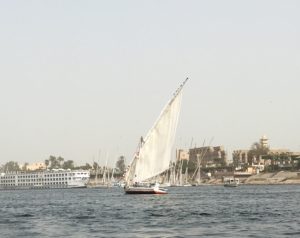
We walked from their garden past their tethered cow and donkey to board a felucca, a small traditional boat. For half an hour, we sailed on the Nile, the longest river in the world, then landed on the east bank near our hotel. The buses met us there.
After flying back to Hurghada, we celebrated the end of our cruise on the Clio and bid farewell to our Egyptian guides. They had put their hearts and souls into sharing Egypt with us. Our group sang their praises to the tune of Michael Jackson’s “We are the World” (remember USA for Africa in 1985?):
You are the world, Program Directors! You are the ones who made our Grand Circle Cruise a life worth living! So, we thank you for your time, your smarts and expertise. Our world is now a better place because of you!
All through Egypt, I thought of our dear cousins, Jay and Maxann Collins, with whom we have enjoyed many adventures. They lived in Cairo in the 1970s. On my request, Jay shared his memories:
We were in Cairo in 1976-77. I was working for Transocean Drilling company (we had a big drill ship working in the Red Sea). Bailee was born in March 1977, in a small hospital on the banks of the Nile River. She was only in the hospital 24 hours. Our landlord’s son was in medical school and said, “if the baby lives, she will be very healthy, given all the good antibodies in Maxann’s blood from living in such a dirty place.” Bailee was almost never sick for years.
Her sister Corby went to nursery school at the Catholic Church. My boss had a girl Corby’s age, so she had a good playmate. We were not traveling much–working and young children. We did climb to the top of the Great Pyramid twice and went inside as far as you can go. We went horseback riding and spent the night in the desert among many tombs, with no signs of people there. Played golf near the pyramid, with barefoot caddies.
Maxann had her purse stolen at the big market. It had some travelers checks inside. To file a claim, she needed a police report, so we went to the police office. After some discussion the officer took out a yellow pad and started filling it up with Arabic script. Maxann said “I need a report number.” He wrote “001” at the top of the page.
After Bailee was born, I had to go to London for a few days. By the time I got back, the time for official birth registration had passed. I needed a birth certificate. After much discussion, the government official said “No problem. We’ll just say she was born today!” When this was not accepted, it led to two pages of writing to get to the next step. Eventually, of course, I got what I needed. It just took lots of discussion and stamps by several individuals in the process. Very Egyptian.
Leave a Reply